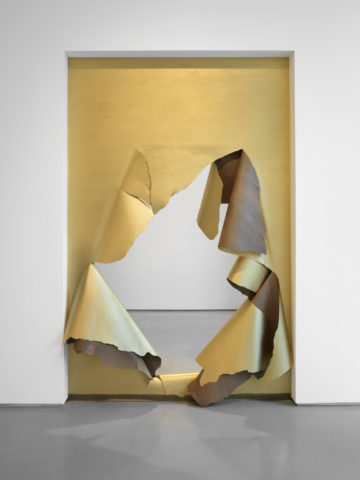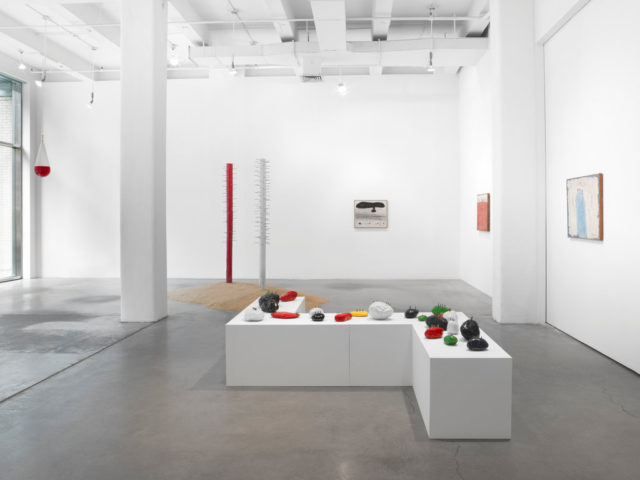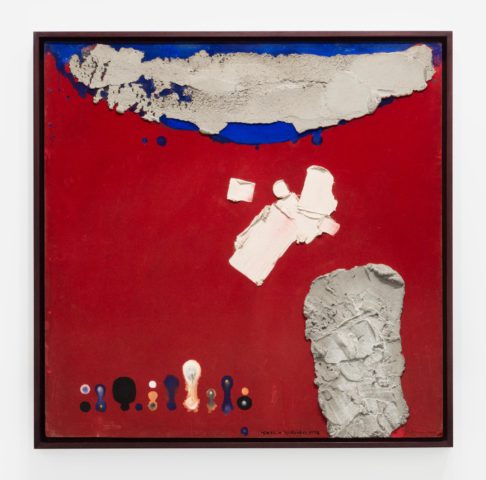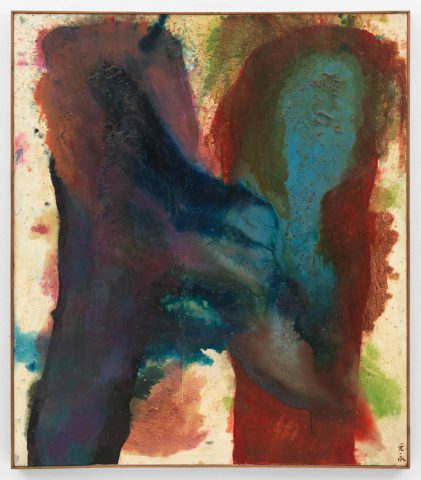





Arthub Favorite: Week 106
Japanese Gutai in the 1950s: Fast and Fearless
Duration: 2018 April 25- June 30
Venue: Fergus McCaffrey Gallery, 514 West 26th Street, New York City
By Roberta Smith
In the 1950s, the artists of the newly formed Gutai group of Japan worked fast and fearlessly, changing styles and mediums at will, staying abreast of the latest postwar developments abroad. The mood of this band of innovators was eclectic — and electric — as demonstrated by “Gutai: 1953-1959,” an ambitious show at Fergus McCaffrey gallery. Across some 70 works we see 11 of the artists who formed the group’s early reputation, ranging easily among abstract painting and sculpture, installation, environments and performance.
Some works here date from 1953 and helped spur the formation of Gutai a year later by several artists born mainly in the 1920s and led by an elder artist, Jiro Yoshihara (1905-1972). They excelled at hybrids and experimenting with materials, exemplified by the performative paintings that Kazuo Shiraga (1924-2008) made with his feet, usually while suspended from a swing, achieving extravagant ridges and ruts of swirling paint. One rare work involving a brown sponge hiding a bonelike object invited viewer participation: “Please Push Strong.” (You can no longer touch, but there’s a video that shows Mr. McCaffrey doing so in white gloves, and Mr. Shiraga creating his swinging paintings.)
Perhaps not surprising in a country renowned for calligraphy, several of these artists (Mr. Shiraga included) probably did more with Jackson Pollock’s allover compositions and innovative drip techniques than their American counterparts. In New York, younger painters sought inspiration in the easier option, the more traditional paint handling of Willem de Kooning; a chief exception was the temporary transplant Yayoi Kusama, who, like her fellow Japanese artists, extended his ideas. (And whether by choice or economic pressures, the Gutai rarely worked in a large scale, avoiding macho overstatement, which is refreshing.)
You’ll see the influence of calligraphy in two abstract paintings by the great Masatoshi Masanobu: black surfaces covered with delicate curls and loops of cream color. In a smaller, equally beguiling work, he dabs cream over two shades of red and then adds more life with hundreds of short quick scratches rather like whiskers. Chiyu Uemae has several approaches. In a slightly unnerving painting, bits of bright color shine through a rough layer of brown paint; the effect is of buried jewels but also radiantly winged insects squirming to life, just below ground.
Entering the show is an act of Gutai participation: You have to step through a jagged hole in gold paper stretched across the gallery’s doorway. This is the most recent remake of Saburo Murakami’s famous “Entrance,” at the First Gutai Art Exhibition in Tokyo in 1955.
For more content about the exhibition, please click here.